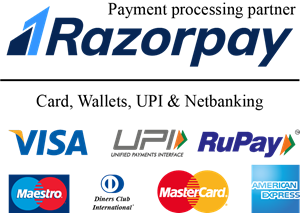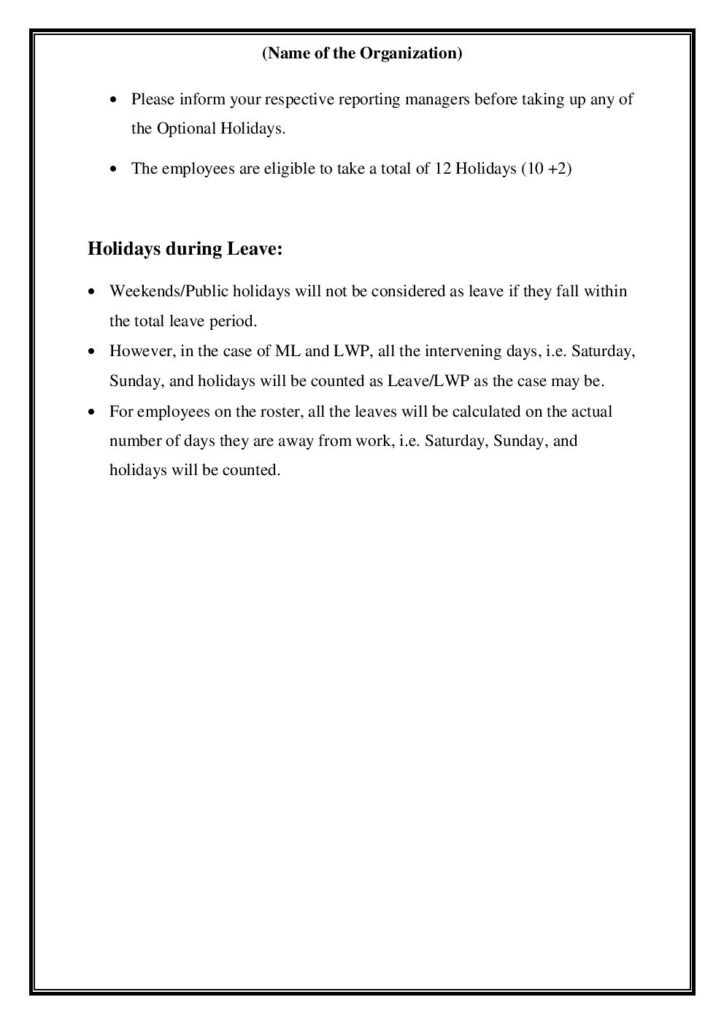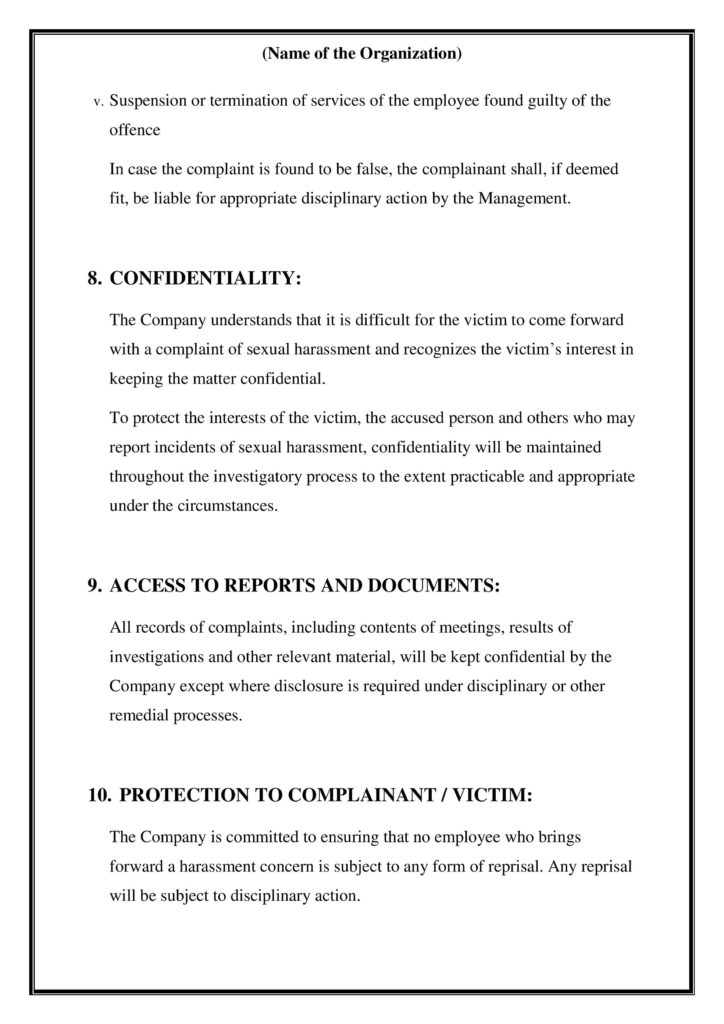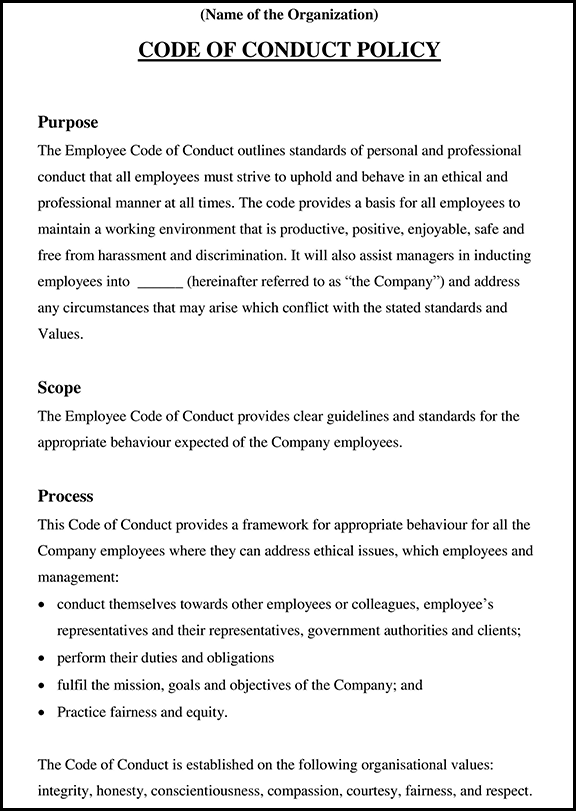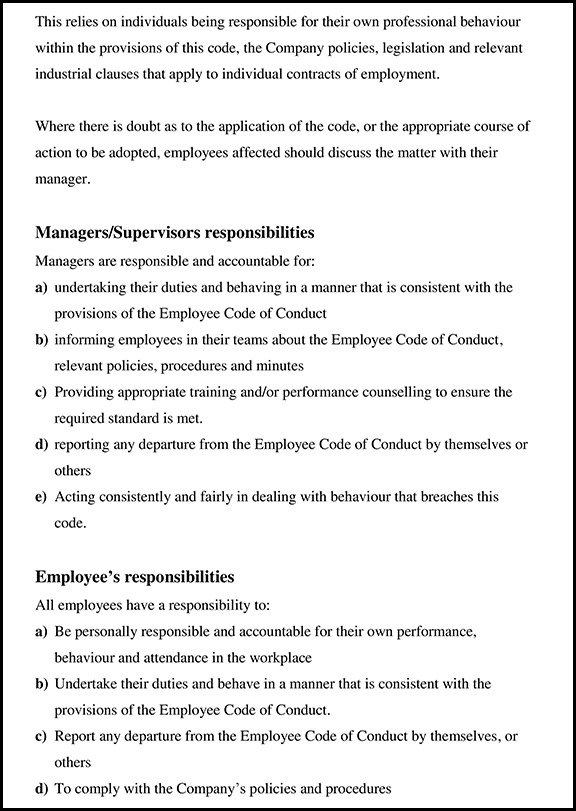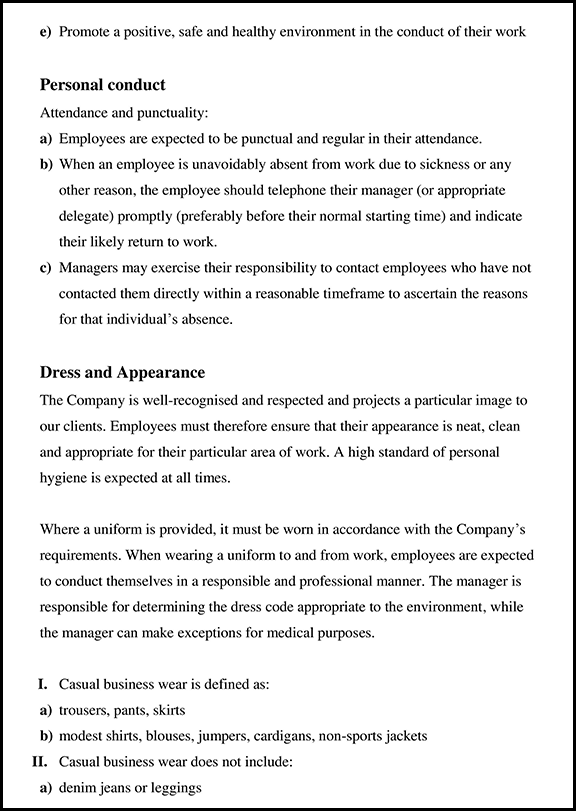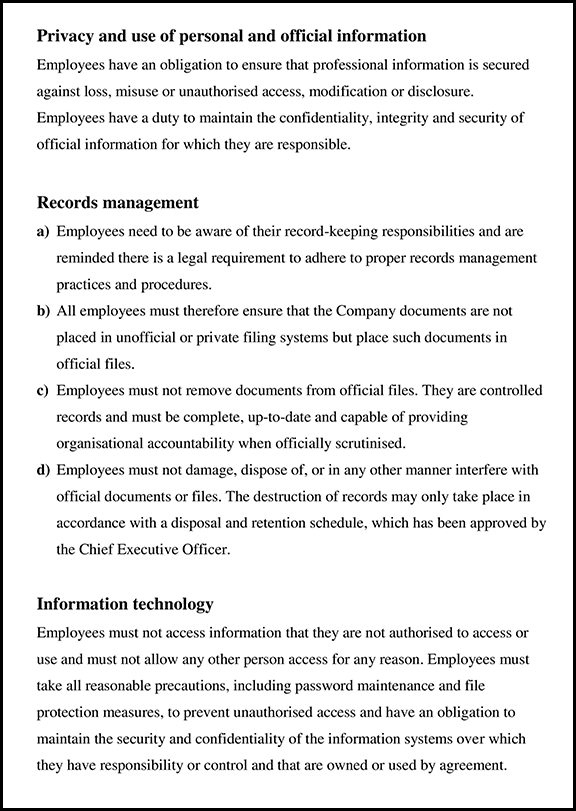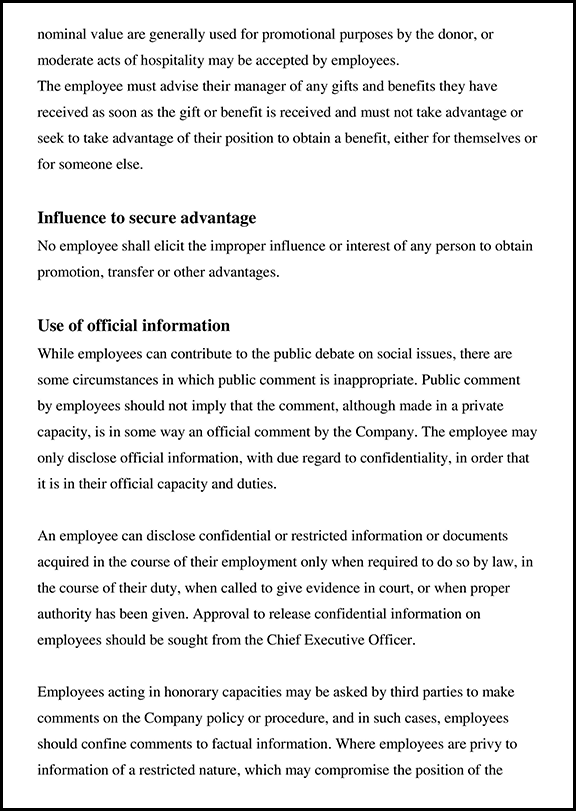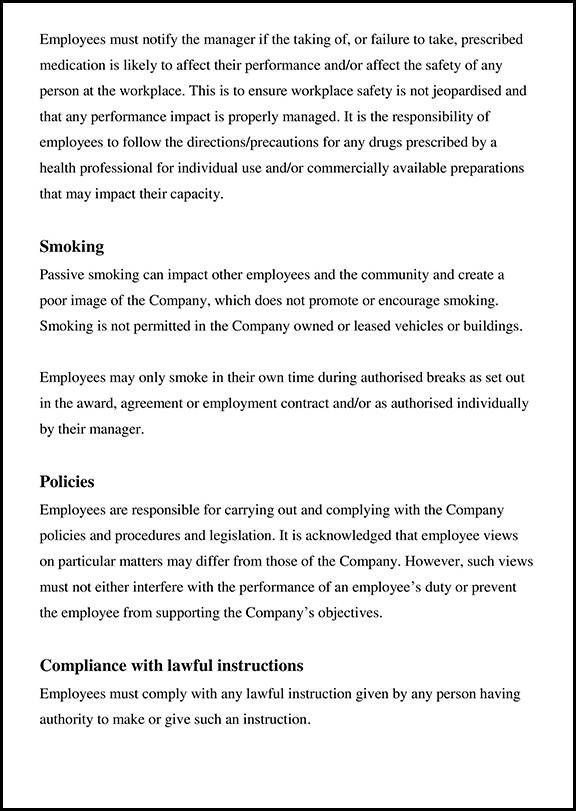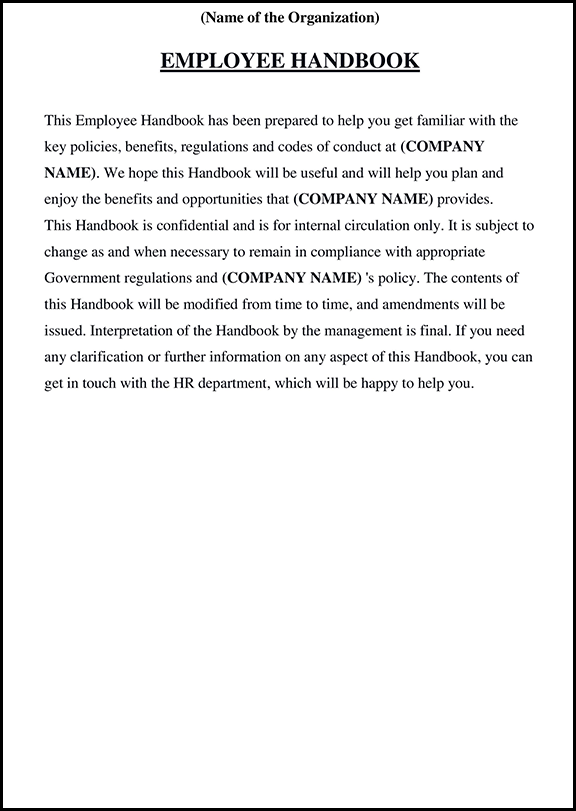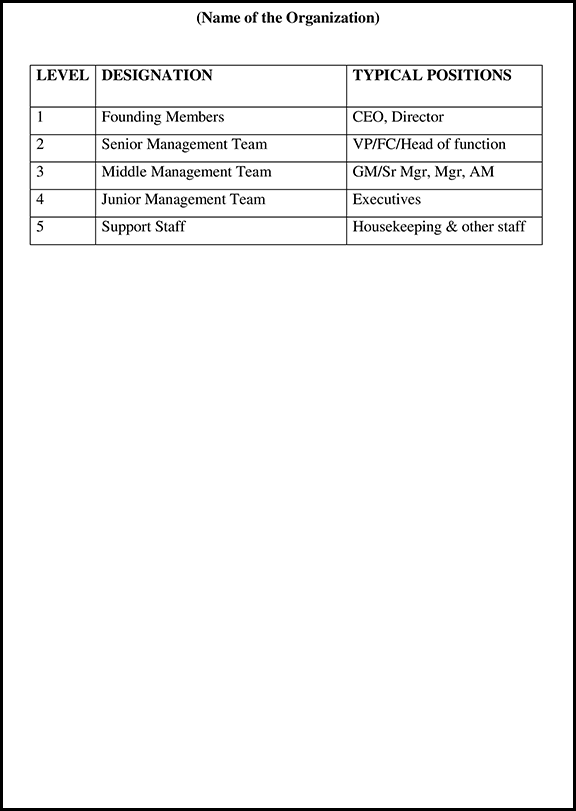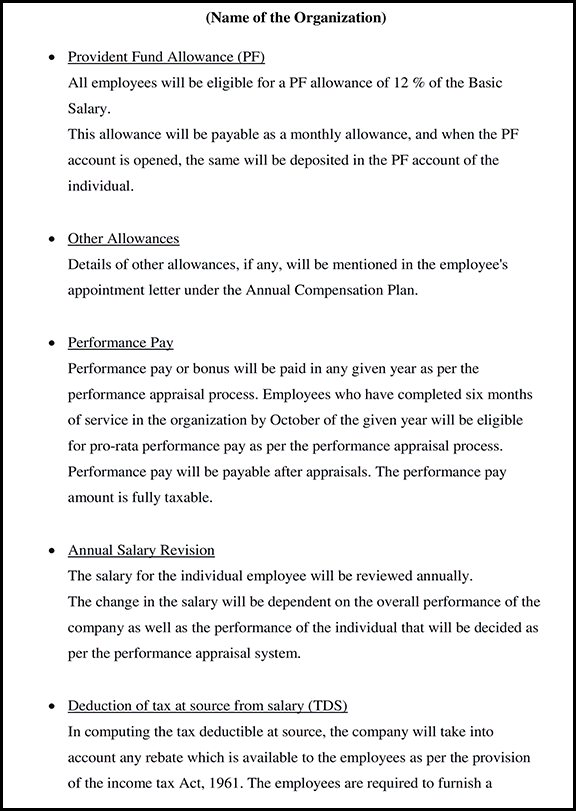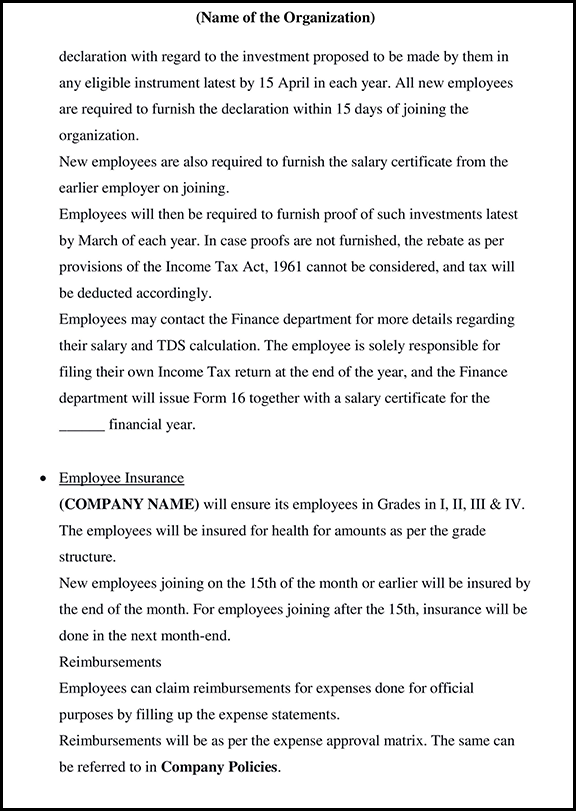
Open Door Policy
Open Door Policy Format
What is Open Door Policy?
An open door policy is when senior authorities like managers or CEOs leave their doors open for employees to communicate. This policy allows employees to persuade their seniors of concerns and problems related to a workplace that needs a review.
A well-versed policy motivates seniors to hear out their employees. This helps seniors to manage issues brought forward by the employees and gives them suggestions against the same.
With the help of open door policy for employees, the traditional chain of command is broken and also breaks the barriers related to accessibility. In addition, it provides a gateway for open communication where employees can easily approach and discuss their problems without any hierarchy and where all workplace troubles are addressed efficiently.
Purpose of Open Door Policy
Implementing an open door policy in workplace creates clear and transparent communication between the employees and senior management. This creates equality among the organization and empowers the organization and its employees.
Elements of an Open Door Policy
When we talk about an open-door policy, these elements follow through every situation that occurs during working hours:
1. Complaints
2. Feedback
3. Asking for counseling
4. Ask for a resolution to a previously raised issue
5. Discuss personal topics
6. Safety and harassment issues
What you Achieve as an Organization After Implementing the Policy
1. Creating a culture of transparency and open communication between both parties creates employee engagement, boosts employee morale, and creates employee satisfaction.
2. Certainly, the policy in the workplace helps both the employees and senior management as it increases the problem-solving skills of the management and employees.
3. With the help of information feedback and positive interactions with a broader spectrum of management lead to the development of employee trust.
Responsibilities on Both Parties End
The policy is quite liberating and permits the freedom of communication channels; certain responsibilities are to be maintained at all times.
Here are some key points to keep in mind
1. Requesting a meeting time and date
2. Listening with empathy and compassion
3. Request consent before sharing private information with members who weren’t present at the meeting.
4. Make an effort to quickly and cordially resolve disputes at the same level.
5. Only escalate if the situation has come to a stall or standoff.
What is the Hierarchy of the Conversation
1. If it is a workplace issue with a colleague coming between your work and office space, approach your manager and have a conversation with them.
2. Accordingly, if the issue is regarding personal and physical safety, then you should approach your HR manager.
3. Also, if the issue is temporary and requires a short modification, speak with the manager before contacting the HR division.
4. Additionally, if it concerns a senior employee, then to safeguard the privacy of the matter, speak with HR directly.
How To Use?
Fill In The Blanks
 Customize Template
Customize Template
 Save, Print, Done.
Save, Print, Done.

Download StartupHR Toolkit Instantly & Access Largest Collection HR Documents.
The only Toolkit to solve all your HR problems in minutes.
Legally compliant and govt approved HR documents.
24×7 customer support over chat & calls (during daytime).
FREE HR audit.
Up to date documents as per the latest Statutory Law.
3 FREE customized documents with Gold Plan.
Expert HR guidance.
Join a Community of 1,00,000+ HR Professionals
Recent Post

Employee Bond Agreement Template
An employment bond format is a legal agreement between an employer and an employee that outlines the terms and conditions before joining the organization. Moreover, the Employment Agreement defines an employment period, job role, salary, benefits, working hours, disciplinary procedures, and other relevant details.
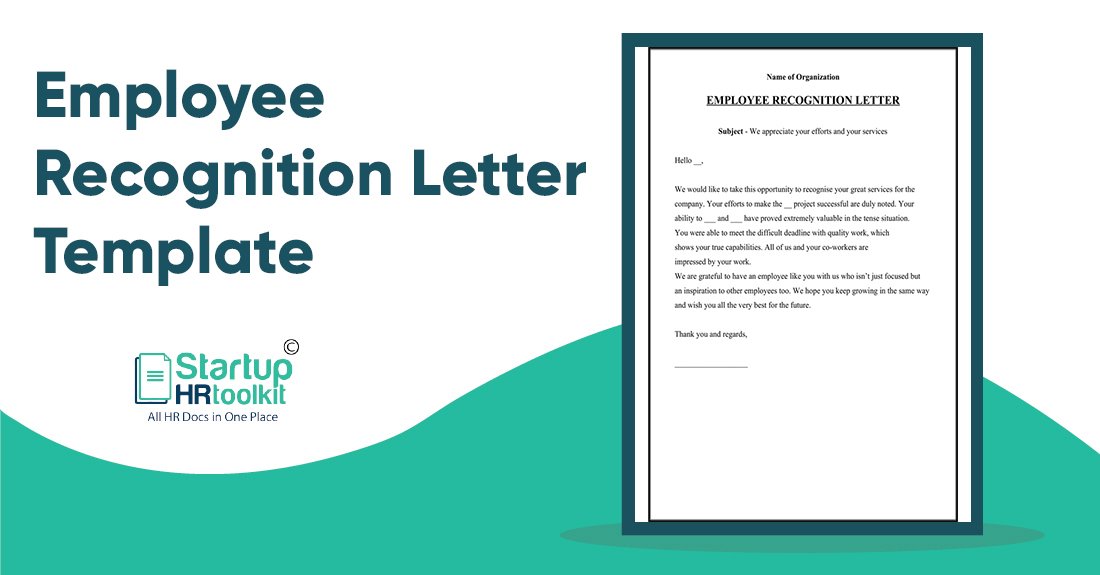
Employee Recognition Letter
An employee recognition letter is a means for employers to thank and appreciate employees for all their hard work and dedication. This letter aims to show and appreciate them for putting in a lot of effort in their job. It motivates them to work harder and achieve all their targets.

Relieving Letter After Resignation
A relieving letter sample is provided to employees when they leave an organization. The Letter states that the employee left their previous employment after a full and final settlement and now join a new organization.







